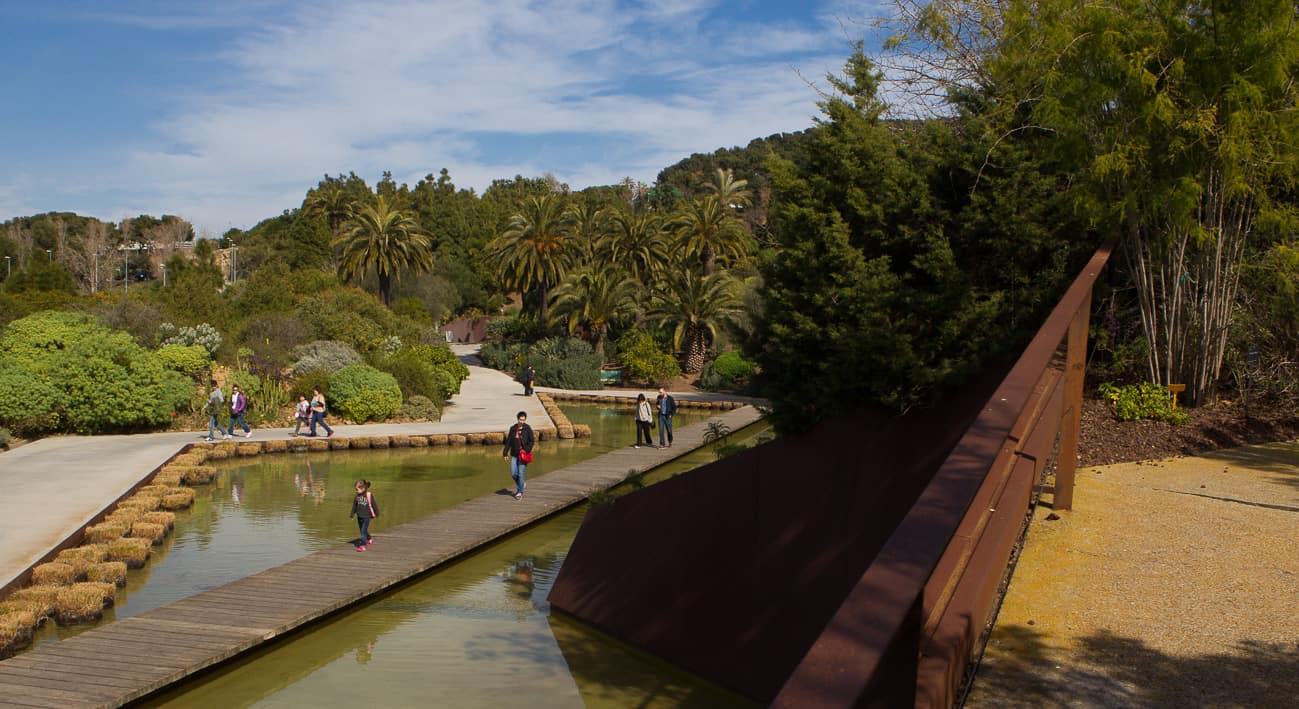The Botanical Garden of Barcelona, the oasis of greenery and biodiversity of the mountain of Montjuïc, prepares to celebrate its 25th anniversary with a day full of free activities for the whole family.
Since its inauguration in 1999, this space has been a meeting point for nature and botany lovers, and now, in its quarter century of existence, wants to share its joy with all Barcelona residents and visitors.
Jardines del Palau de Pedralbes opens Les Nits de Barcelona festival with Natalia Lafourcade
Next Sunday, April 21, 2024, the Botanical Garden will become a vibrant stage where various outdoor activities will take place from 10 am to 8:30 pm.
Workshops, games, circus shows, live music and much more await those who come to celebrate this special milestone. From the little ones to the adults, everyone will find something to fascinate them in this fun-filled day of learning.
One of the main attractions will be the clue game “Em roda el cap!”, in order to make the attendees look for challenges and clues in the corners of the garden.
In addition, attendees will be able to enjoy the mechanical games and puzzles of “Els amics d’enCrusó”, as well as participate in creative workshops such as “Flipbooks” and “Minilabs”, where they will be able to experiment with art, nature and literature.
The Botanical Garden of Barcelona celebrates its 25th anniversary
For those who prefer to relax and enjoy music, there will be live performances by talented artists such as Magalí Datzira, as well as circus shows such as “Pelat” that will amaze young and old alike.
The day promises to be an unforgettable experience for all those who come to celebrate at the Botanical Garden.
The Hortes de Sant Bertran Gardens are transformed into a 6,000 m2 green space.
To facilitate access to the site, a shuttle bus service will be provided from Plaza España to the gates of the Garden. However, there are also public transportation options such as the metro and several buses that reach Montjuïc mountain, making it easy and convenient to get to the event.
Where is the Botanical Garden of Barcelona?
In addition to the activities scheduled for the anniversary, visitors will have the opportunity to explore the impressive collection of plants housed in the Botanical Garden.
With more than 20,000 plants of 2,000 different species, this space offers a fascinating journey through the Mediterranean flora and other regions of the world such as Australia, South Africa, Chile and California.
For those wishing to visit the Botanical Garden during this special day, there are several transportation options available. The venue will offer a shuttle bus service that will depart from Plaza España and will arrive directly at the gates of the garden.
In addition, you can access the site by metro, using the green (L3) or red (L1) lines to Plaça Espanya, or by bus, taking line 150.
Strolling through the Botanical Garden
History of the Botanical Garden of Barcelona
The Historical Botanical Garden of Barcelona, a true oasis of biodiversity and history in the city, has its origins in the 1930s. It was created by the eminent botanist Pius Font i Quer in the hollows of the old Foixarda quarry, specifically in the areas known as Sot de la Masia and Sot de l’Estany. These lands, rich in geological and botanical history, were ceded to the Barcelona City Council in 1915 by the family of Josep Rovira i Bruguera, an influential industrialist and regionalist politician, with the explicit purpose of being used for parks and gardens. This act of philanthropy was aligned with the Montjuic mountain urbanization project, conceived for the 1929 Barcelona International Exposition.
Three gardens in our city that you will love
Inauguration and Initial Challenges
The Historical Botanical Garden was officially inaugurated on July 17, 1941, becoming a space dedicated to the research and conservation of plant species, as well as a place of recreation and learning for the citizens and visitors of Barcelona. However, its development was not without its challenges. In 1986, as part of the preparations for the 1992 Olympics, the Montjuic mountain was refurbished, including the opening of new accesses. These interventions affected the stability of the steep terrain where the Botanical Garden was located, which led to the temporary closure of its facilities that same year.
Creation of a New Botanical Garden
This temporary closure prompted the proposal to establish a new botanical garden in Barcelona that could meet the growing needs for the study and conservation of flora, especially Mediterranean flora. The new Botanical Garden of Barcelona was inaugurated on April 18, 1999, built on the site of a former rubble dump on another part of Montjuic mountain. This project, subsidized by the European Union, not only revitalized a previously degraded area, but also provided the city with a modern botanical center capable of hosting large-scale research and conservation projects.
Reopening and Differentiation of the Historic Garden
After years of land consolidation and refurbishment efforts, the Historic Botanical Garden was reopened to the public in October 2003. Now known as the Historical Botanical Garden, it is clearly distinguished from the newer Botanical Garden of Barcelona. The “Historic” designation not only reflects its longstanding legacy and cultural significance to Barcelona, but also underscores its focus on botanical heritage preservation and environmental education.
Legacy and Future
Today, the Historic Botanical Garden remains a testament to Barcelona’s dedication to environmental conservation and botanical education. With its rich collection of native and exotic species, the garden is not only a vital resource for researchers, but also a haven of serenity and natural beauty for all visitors. Its history and evolution continue to inspire future generations about the importance of sustainability and respect for biodiversity.

